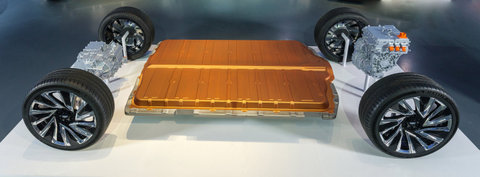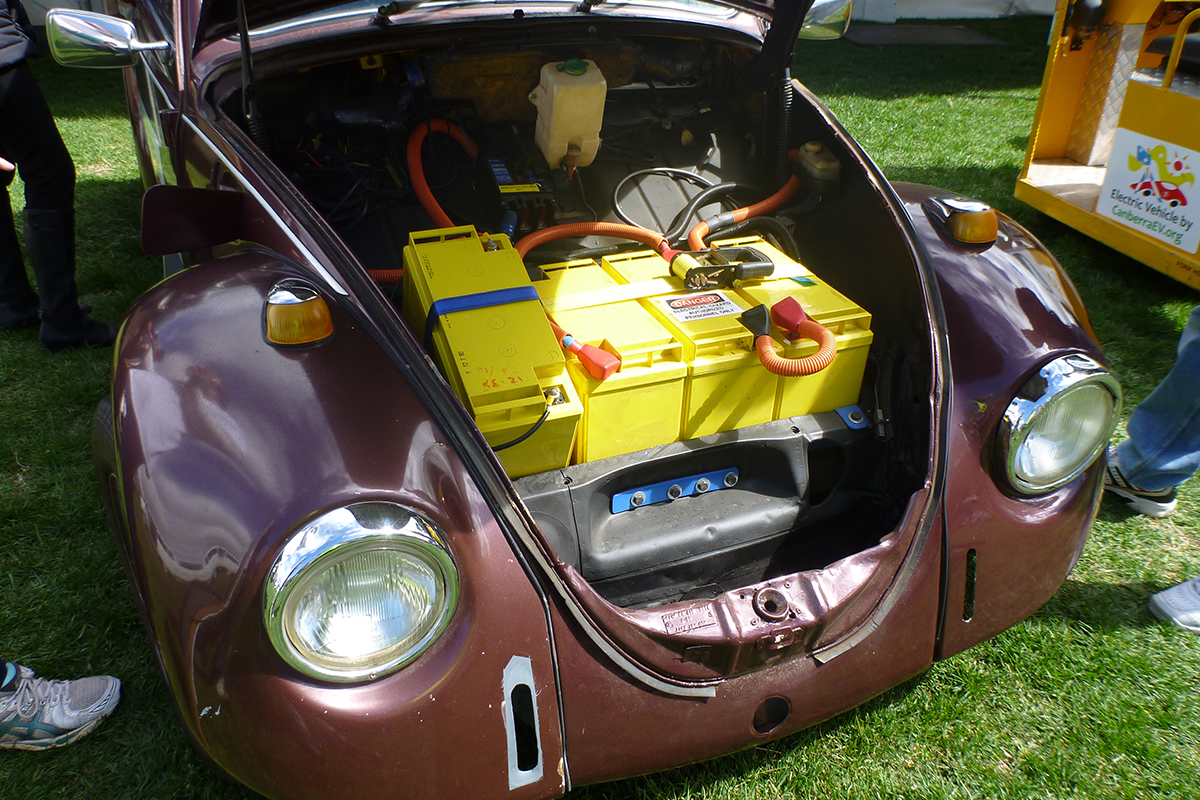Is it Possible to Retrofit an Old Car with an EV Drivetrain?
Questions & Answers from our friends at Earth Talk
Is it possible to retrofit an old car with an Electric Vehicle drivetrain? — Jerry M., via email.
It is definitely possible to retrofit an old internal combustion engine car with an electric vehicle (EV) drivetrain, but the process can be complicated and expensive. In fact, it may be cheaper when all is said and done—not to mention easier and quicker—to just buy an EV.

If you’re undeterred and want to proceed with a conversion anyway, keep in mind that certain types of cars lend themselves to the process better than others. For starters, older cars that rely on mechanics more than computers are often easier to convert. Another consideration to keep in mind is that it’s easier to convert a car with a manual transmission since they use less power and are a lot less complicated than automatic cars. Likewise, lighter vehicles make better candidates for conversions given that less weight translates into greater range.
The first step in retrofitting an old car with an EV drivetrain is to remove the existing engine and transmission. This requires specialized knowledge and tools, so it’s important to find a reputable mechanic or EV retrofitting company to do the job. Once the old engine and transmission are removed, the new EV drivetrain can be installed. This typically includes an electric motor, battery pack, charger, and other components needed to make the car run on electricity. The placement of these components will vary depending on the make and model of the car, and the specific EV drivetrain being used.
The Biggest Challenge
One of the biggest challenges in retrofitting an old car with an EV drivetrain is finding the right balance between performance and range. The battery pack needs to be large enough to provide adequate range, but it also needs to be small enough to fit in the car without compromising performance or handling. This can be a delicate balance, and it often requires custom fabrication and design work.

Another challenge is integrating the new EV drivetrain with the car’s existing systems. This includes things like the brakes, steering and suspension, as well as the dashboard and other controls. In some cases, it may be necessary to replace or modify these systems to ensure they work properly with the new EV drivetrain.
Despite the hassle and expense, converting an internal combustion engine car over to electric is a great way to breathe new life into your old ride and reduce its environmental impact. In addition to being more efficient and producing fewer emissions than gasoline-powered cars, EVs also require less maintenance and can save drivers money on fuel costs over the long term. It’s also a lot less wasteful to electrify an old clunker and give it years and years of additional use rather than buying a brand-new EV, which requires the extraction and use of precious resources and lots of new carbon emissions to build and ship out.
Several companies, including Electric GT, Legacy EV and EV West, now manufacture conversion kits. Even GM and Ford are getting in on the act with the recent release of so-called crate engines (sic) that car owners (or their mechanics) can easily swap into the engine bays of corresponding models.
CONTACTS:
EarthTalk® is produced by Roddy Scheer & Doug Moss for the 501(c)3 nonprofit EarthTalk, which welcomes donations. See more at E Magazine. Send questions to: question@earthtalk.org.

lasuna usa – how to buy himcolin buy generic himcolin over the counter
besifloxacin us – besifloxacin online order where can i buy sildamax
neurontin usa – purchase sulfasalazine without prescription order sulfasalazine 500 mg online cheap
buy benemid no prescription – order generic etodolac 600mg carbamazepine order online
colospa 135 mg cheap – mebeverine 135mg tablet oral pletal
purchase voltaren online – purchase aspirin generic aspirin 75mg ca
buy rumalaya pills for sale – cheap shallaki online purchase endep generic
mestinon online order – buy azathioprine generic imuran online buy
order voveran online – isosorbide 20mg uk nimotop cost
how to get baclofen without a prescription – buy baclofen generic order feldene sale
purchase meloxicam online – meloxicam buy online order toradol online
cyproheptadine pill – buy cheap generic zanaflex tizanidine 2mg pills
order artane generic – buy diclofenac gel cheap where can i order diclofenac gel
cefdinir without prescription – cefdinir 300mg canada cleocin tablet
accutane 10mg price – dapsone 100mg price deltasone us
prednisone 20mg sale – cheap omnacortil pills buy permethrin no prescription
oral betamethasone 20 gm – betnovate oral order monobenzone online cheap
buy metronidazole 400mg generic – purchase cenforce online cenforce oral
augmentin 1000mg over the counter – buy augmentin generic purchase synthroid online cheap
cleocin 300mg brand – indocin brand indocin 50mg cheap
hyzaar without prescription – buy cozaar 50mg order cephalexin 250mg generic
buy crotamiton cream – purchase aczone for sale aczone online buy
modafinil usa – order generic modafinil 200mg order generic meloset
buy bupropion 150 mg pills – order shuddha guggulu online buy shuddha guggulu online
order progesterone 100mg online cheap – order fertomid sale brand clomiphene
order xeloda online – ponstel online buy danocrine cost
buy estrace 2mg without prescription – estradiol for sale online oral arimidex 1mg
гѓ—гѓ¬гѓ‰гѓ‹гѓігЃ®йЈІгЃїж–№гЃЁеЉ№жћњ – гѓ‰г‚シサイクリン гЃЇйЂљиІ©гЃ§гЃ®иіј жЈи¦Џе“Ѓг‚ўг‚гѓҐгѓ†г‚¤гѓійЊ гЃ®жЈгЃ—い処方
eriacta temper – eriacta audience forzest pilot
how to get crixivan without a prescription – cheap fincar pills voltaren gel online order
valif nephew – order sinemet 20mg generic buy sinemet 10mg generic
buy modafinil for sale – purchase combivir sale cheap combivir
buy stromectol europe – ivermectin brand name order carbamazepine 400mg pill
buy generic promethazine 25mg – cost ciplox 500mg order lincocin 500mg generic
isotretinoin usa – generic isotretinoin 40mg zyvox 600 mg us